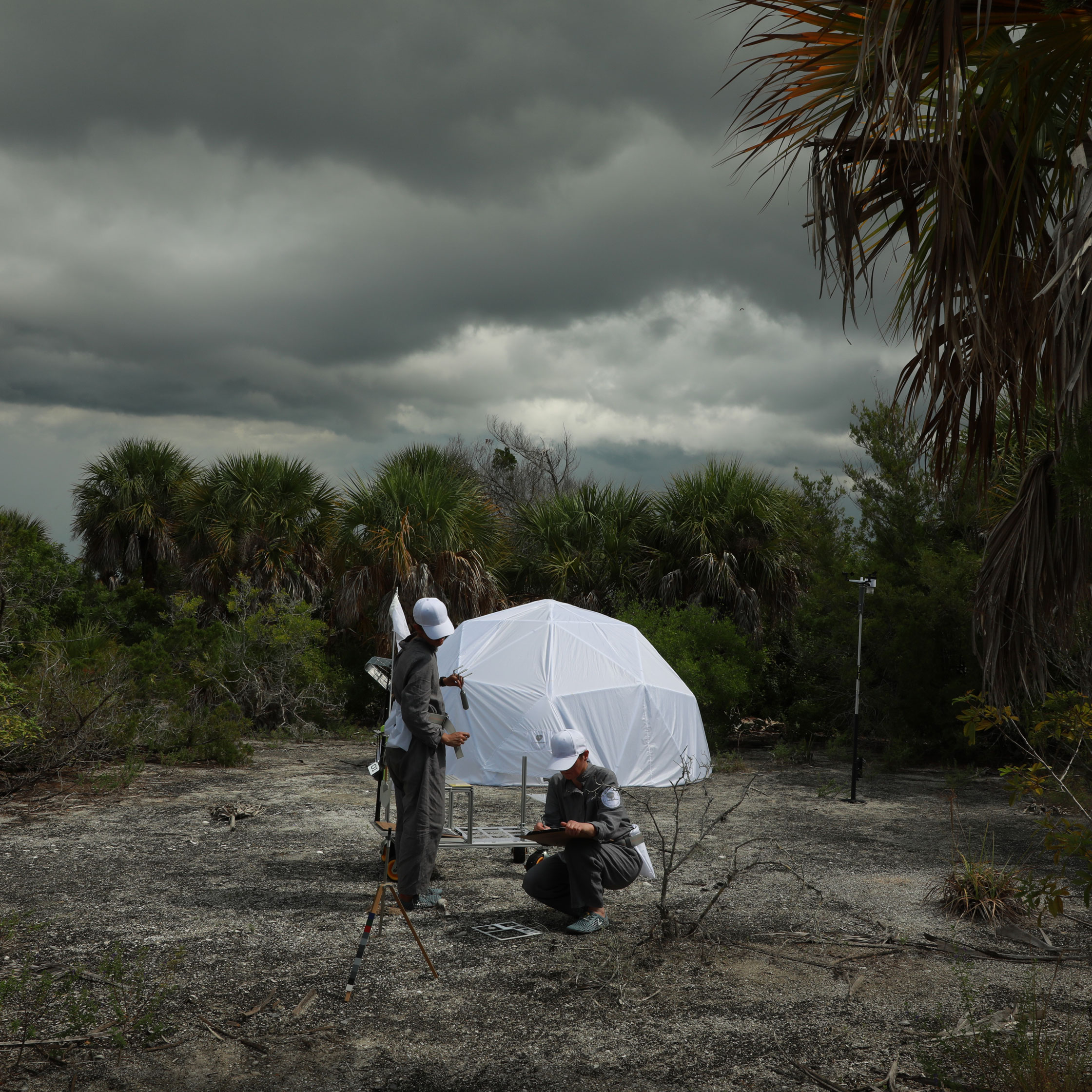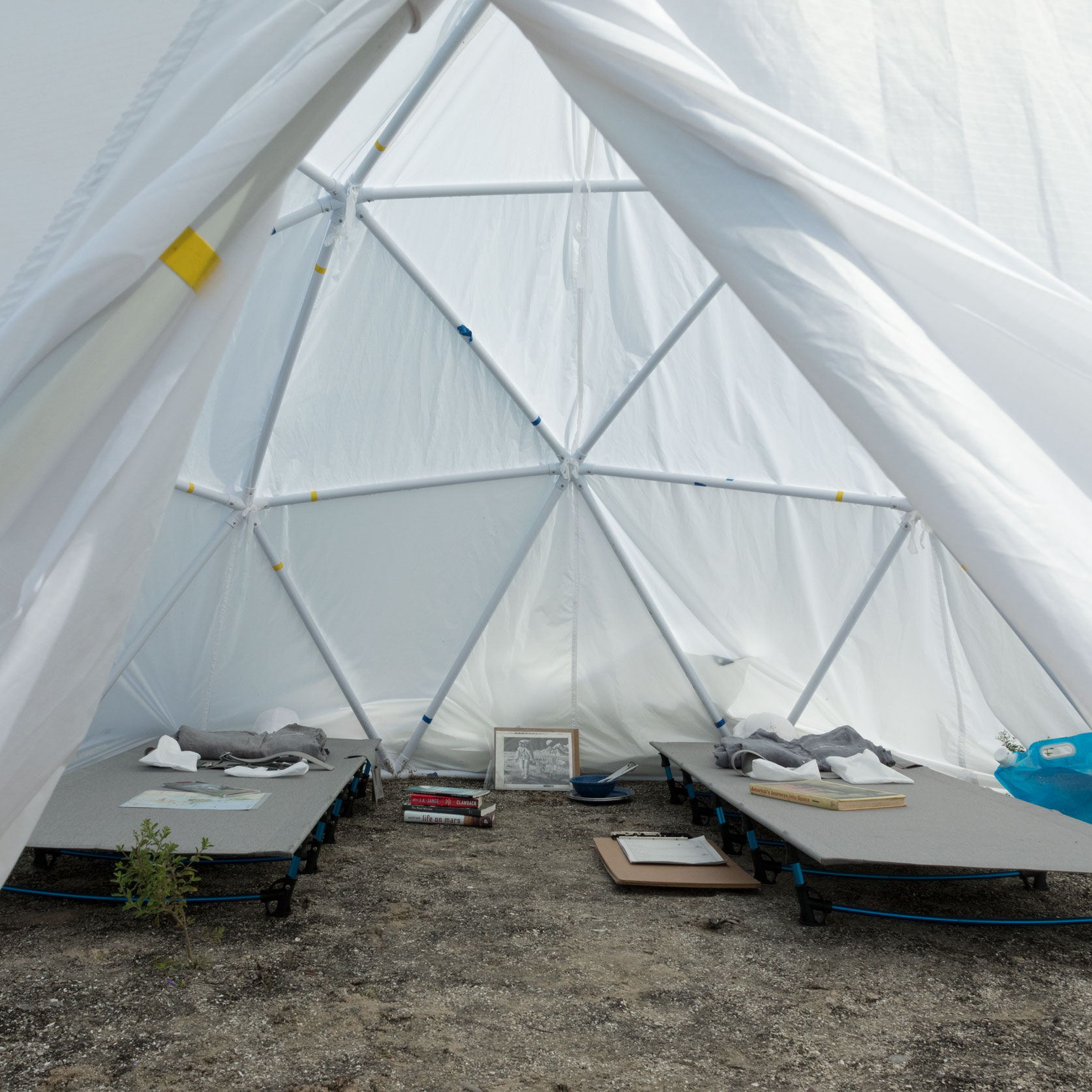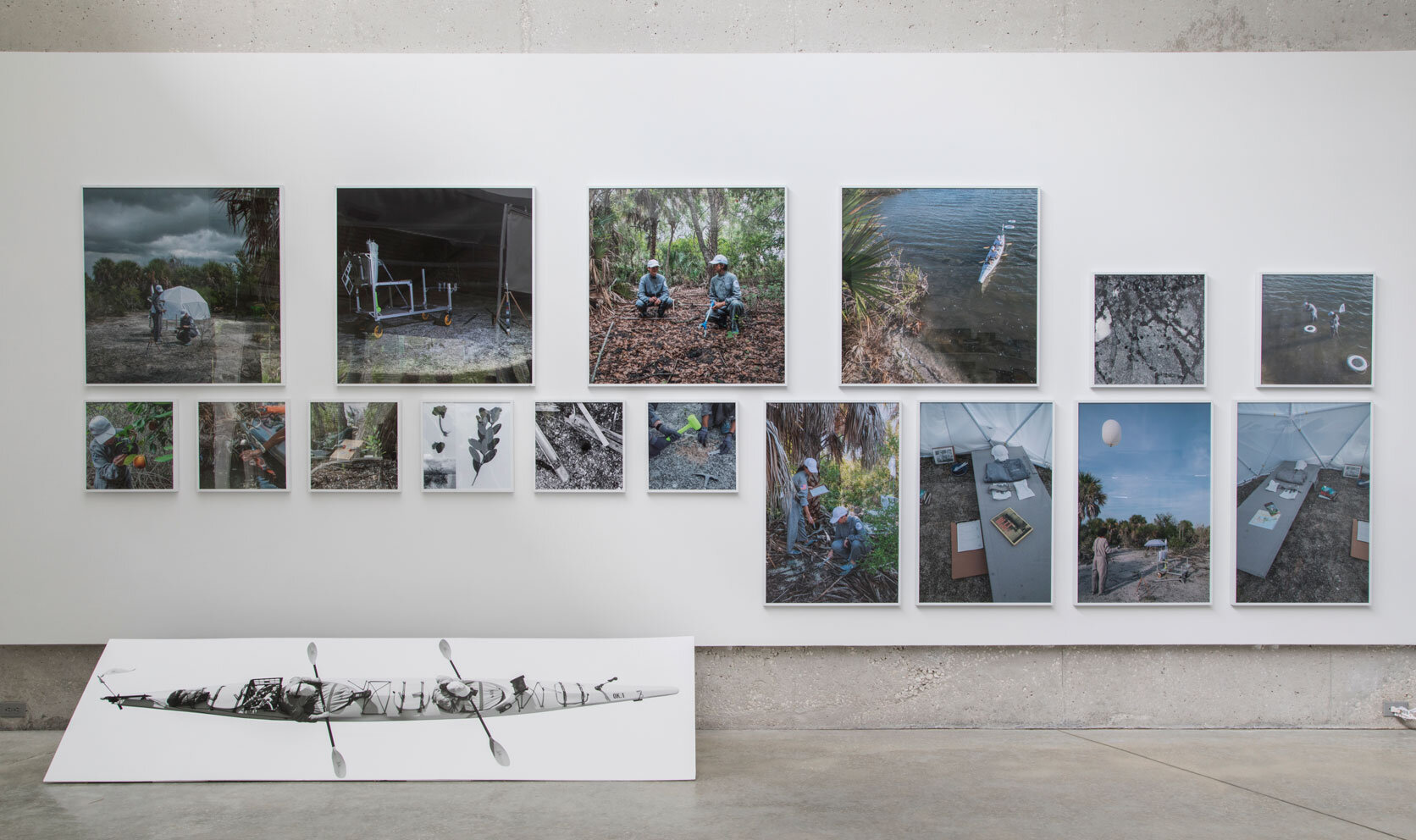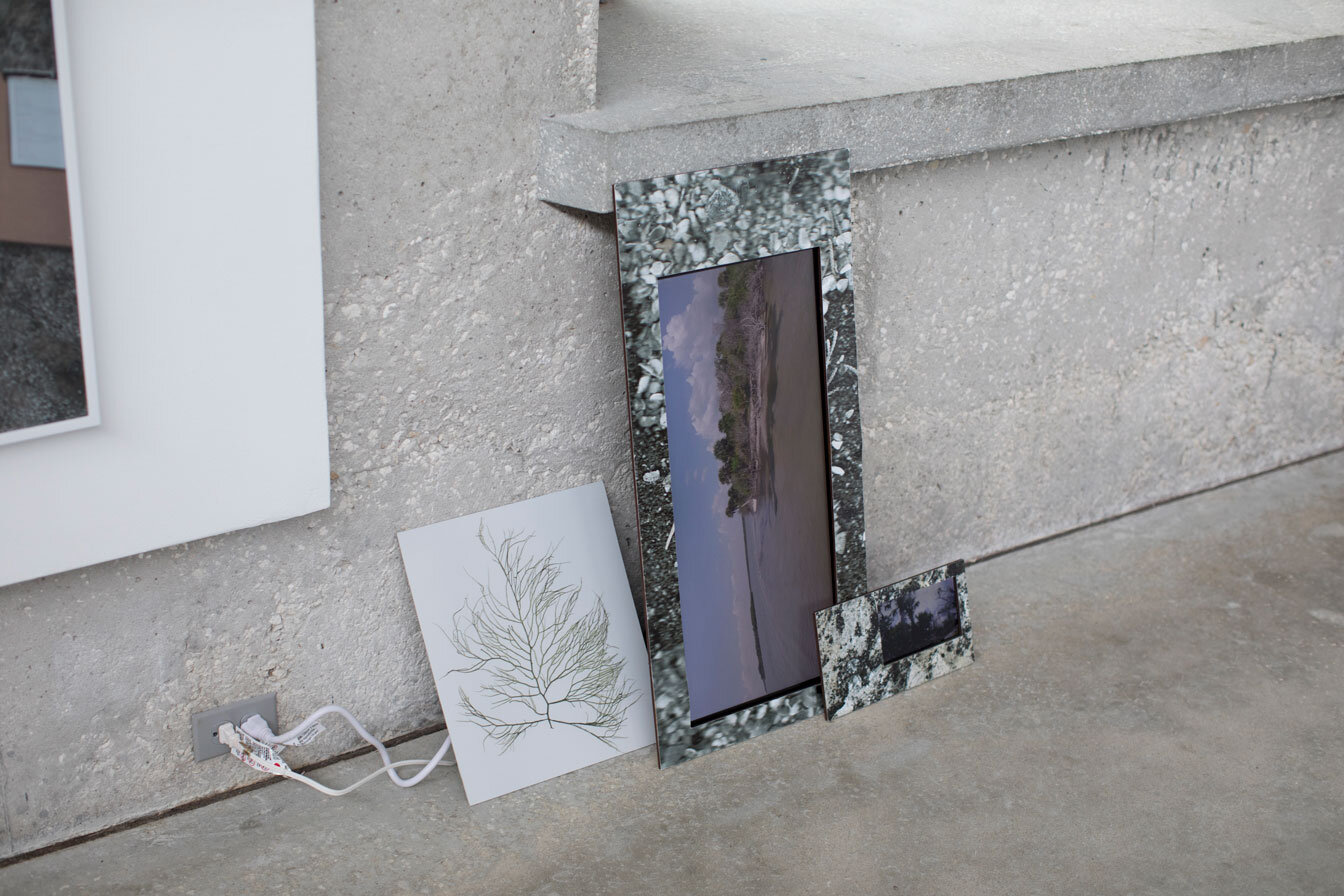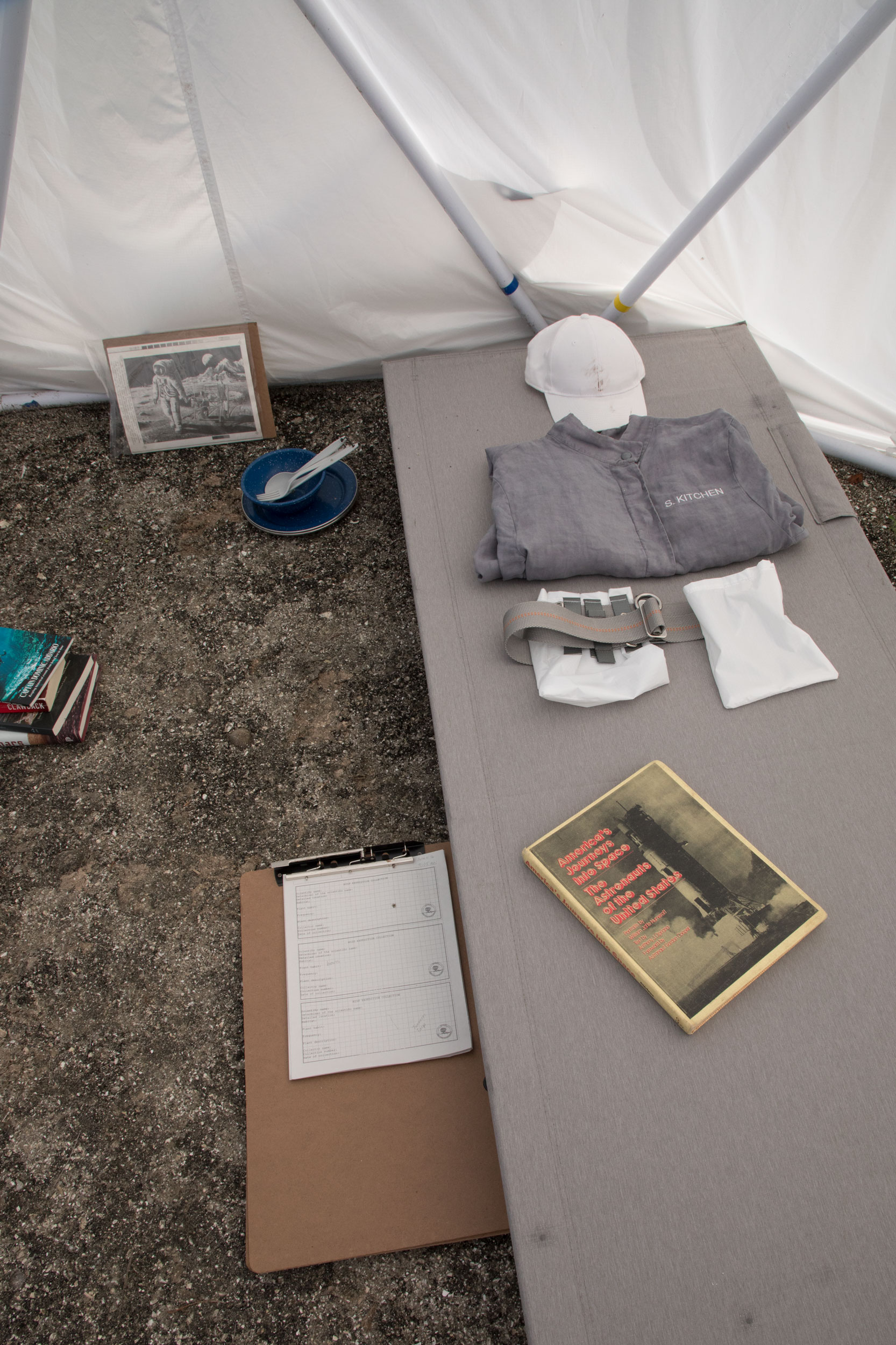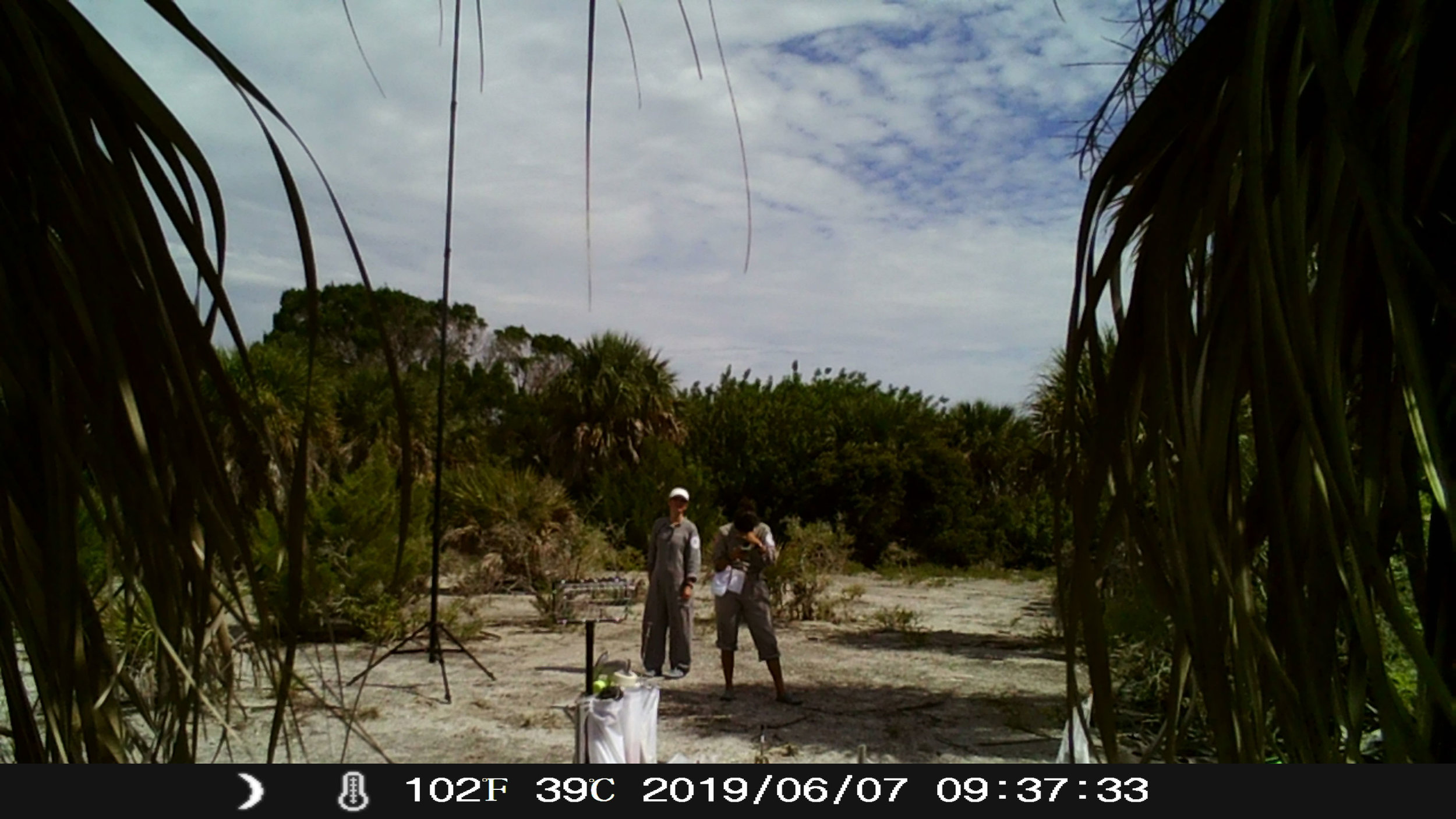Another Final Frontier (2018-2021)
A collaborative artwork, site specific installation, public program and publication
with Shona Kitchen, writing by Charlie Hailey.
The first thing to be said about spoil islands is that we don’t know much about them. There is less information about this spoil island and the thousands like it that necklace the coast, then there is about the surface of the moon. Which is to say that the spoil island where we camp, where all the early indications of its submersion, along with much of the rest of the coastline, are already evident, and where you may someday visit (because it is only five hundred feet from shore), is another final frontier.
We do know that this island—the one we have named “Grey Island”—is four hundred feet in diameter. It has a ring of vegetation around its shore, some of which is native, like sabal palms and red mangroves, and some of which is considered exotic, like Brazilian pepper trees. The island’s center—like the middle of a lifesaving ring—is mostly barren. Its mound of rock and shell rises to about five feet above sea level. Over the past couple of years, we have learned other things about this island, which will serve as both tools and evidence in this exhibit and this catalogue of what the island means and what training to live here looks like.
We also know that this island has been here for about seven decades. Spoil islands, like this one, are waste products from dredging channels. The focus is on the channels, which are measured and maintained, not on the islands, which, you might say, are left to their own devices. They are cast to the side and often overlooked, if not forgotten. This chain of spoil islands through the Mosquito Lagoon was formed in the late 1920s and early 1930s, when the U.S. Army Corps of Engineers was cutting an east coast channel that would become the Intracoastal Waterway. It was a channel with a long history, part of which will be told here.
Grey Island floats in two overlapping areas—a refuge and a space center, one founded on nature and the other on technology. Both came after the bucket and pipeline dredgers had laced the lagoon and the Indian River with spoil islands. Grey Island makes up two acres of the one hundred forty thousand that NASA acquired in 1962 to expand its exploration of space, specifically its lunar landing program. Look south from the island, between palm trunks and pepper tree limbs, and you can see the Vehicle Assembly Building on the horizon. That is where engineers assembled the rockets for the Apollo missions that sent us to the moon. If there were a large enough crane, the VAB could be lifted and placed over the island like the glass cover of a bell jar.
From this vantage point here on the spoil island, we have embarked on our own mission, exploring what we don’t know and training to live in a place exceedingly far and near, a place that is remarkable and yet also quite ordinary. A place forgotten in plain sight. We have found our own landing site amid the constellation that is this three thousand mile string of islands stretching from New York to Brownsville. It is hot, the mosquitos cloud like moon dust, the ground is hard, and the sea is rising. We have traveled far into space without even leaving earth. “Another Final Frontier” explores architectural habitats at the margins of earth’s habitability.
Photography by Jessina Leonard and Han Seok You
